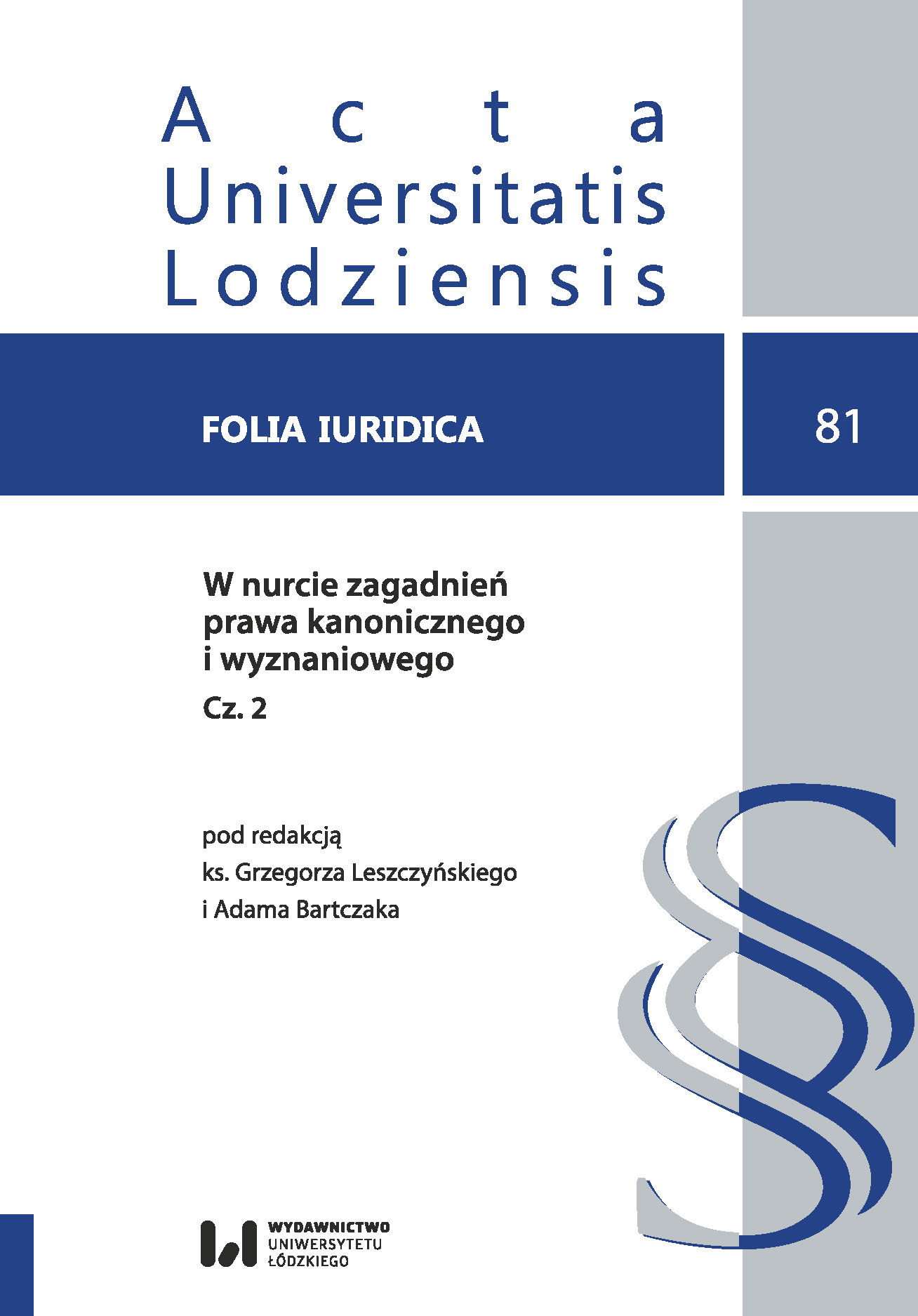Dobro małżonków jako przedmiot symulacji zgody małżeńskiej
DOI:
https://doi.org/10.18778/0208-6069.81.03Słowa kluczowe:
małżeństwo, zgoda małżeńska, symulacja, dobro małżonków, wykluczenieAbstrakt
Kodeks prawa kanonicznego z 1983 r. definiuje trzy grupy przyczyn stwierdzenia nieważności małżeństwa: przeszkody zrywające, wady zgody małżeńskiej i wady formy kanonicznej. Pośród różnych wad zgody małżeńskiej w kan. 1101 § 2 KPK Prawodawca wymienia różne formy symulacji. Symulacja oznacza, że kontrahent zawiera małżeństwo jedynie zewnętrznie, wykluczając małżeństwo jako takie lub jakiś jego istotny element lub przymiot. Niniejszy artykuł stanowi próbę określenia jednej z form symulacji częściowej, określanej jako wykluczenie dobra małżonków, z uwzględnieniem sposobu jego dowodzenia.
Pobrania
Bibliografia
Codex Iuris Canonici auctoritate Ioannis Pauli PP. II promulgatus. 1984. Przekł. polski zatwierdzony przez Konferencję Episkopatu. Poznań: Pallottinum.
Google Scholar
Pontificia Commisio Iuris Canonici Reconoscendo. 1977. Communicationes 9: 123.
Google Scholar
Pontificia Commisio Iuris Canonici Reconoscendo. 1983. Communicationes 15: 221.
Google Scholar
Sent. coram Fagiolo (30 października 1970). 1970. Sacrae Romanae Rotae Decisiones seu Sententiae 62: 878–990.
Google Scholar
Sent. coram Pinto (23 listopada 1979). 1980. Monitor Ecclesiasticus 105: 393.
Google Scholar
Sobór Watykański II. 2002a. „Konstytucja dogmatyczna o Kościele Lumen gentium”. W Sobór Watykański II. Konstytucje, dekrety, deklaracje. 104–166. Poznań: Pallottinum.
Google Scholar
Sobór Watykański II. 2002b. „Konstytucja duszpasterska o Kościele w świecie współczesnym Gaudium et spes”. W Sobór Watykański II. Konstytucje, dekrety, deklaracje. 526–606. Poznań: Pallottinum.
Google Scholar
Arroba Conde, Manuel. 1993. Diritto processuale canonico. Roma: Ediurcla.
Google Scholar
Bertolino, Rinaldo. 1996. „Gli elementi costitutivi del bonum coniugum: stato della questione”. W Il bonum coniugum nel matrimonio canonico. 7–32. Città del Vaticano: Libreria Editrice Vaticana.
Google Scholar
Bonnet, Pier Antonio. 1996. „Il bonum coniugum e l’essenza del matrimonio”. W Il bonum coniugum nel matrimonio canonico. 89–135. Città del Vaticano: Libreria Editrice Vaticana.
Google Scholar
Gajda, Piotr Mieczysław. 2000. Prawo małżeńskie Kościoła katolickiego. Tarnów: Wydawnictwo Biblos.
Google Scholar
García Failde, Juan Jose. 1984. Nuevo derecho procesal canónico. Salamanca: Universidad Pontificia de Salamanca.
Google Scholar
Góralski, Wojciech. 2000. Kanoniczne prawo małżeńskie. Warszawa: Polskie Wydawnictwo Prawnicze Iuris.
Google Scholar
Leszczyński, Grzegorz. 2000. „Oświadczenia stron jako środek dowodowy w procesie o stwierdzenie nieważności małżeństwa”. Prawo Kanoniczne 43 (1–2): 107–121.
Google Scholar
Leszczyński, Grzegorz. 2002. „Niedojrzałość emocjonalna a wykluczenie dobra małżonków”. Ius Matrimoniale 7 (13): 87–110.
Google Scholar
Viladrich, Pedro Juan, 2002. Konsens małżeński. Sposoby prawnej oceny i interpretacji w kanonicznych procesach o stwierdzenie nieważności małżeństwa. Warszawa: Wydawnictwo Uniwersytetu Kardynała Stefana Wyszyńskiego.
Google Scholar













